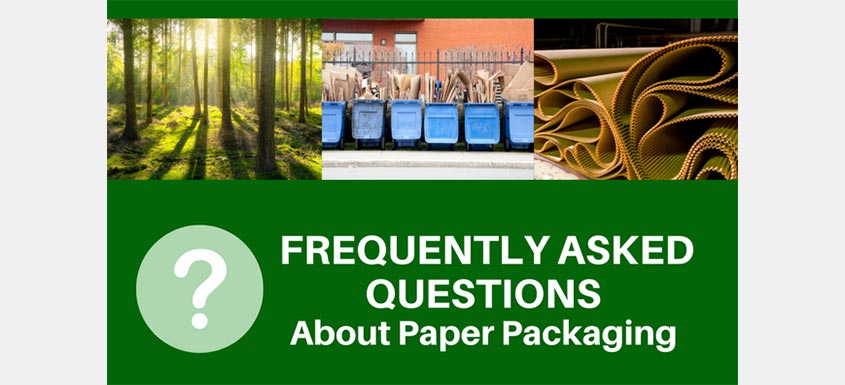PPEC is pleased to help answer some of the most commonly asked questions about the environmental attributes of Canadian-made paper-based packaging.
Are boxes made from recycled materials?
Yes. Most of the three major types of paper packaging grades manufactured in Canada – containerboard (used to make corrugated boxes), boxboard (used to make boxboard cartons), and Kraft paper (used to make paper bags) – are made from recycled content.
How is paper packaging made?
In Canada, paper packaging is made from responsibly sourced virgin, recycled, or blended pulp (a mix of the two). About 82% of the three major paper packaging grades made in Canada are from recycled content. Mills also use sawmill residues, and some supplement their pulp with virgin fibres from trees.
Do mills source from certified forests?
Yes, mills have chain-of-custody certification to verify that their paper fibre sources are responsibly sourced by independent, third-party certification bodies, including Forest Stewardship Council (FSC), Sustainable Forestry Initiative (SFI), Program for the Endorsement of Forest Certification (PEFC), and Canada’s Sustainable Forest Management Standard (CSA Z809).
How much of Canada's forests are used to make paper packaging?
The Canadian paper packaging industry doesn’t use much in the way of freshly cut trees, and the little that is harvested (0.2% in 2019) must be successfully regenerated by law.
Are pizza boxes recyclable?
Yes, pizza boxes are typically made from corrugated board, which is recyclable in Canada. Once the empty and clean pizza box is placed in the recycling bin, the recycled material makes its way back to a paper packaging mill, where it will get remade into a new pizza box or another type of paper-based packaging.
Is paper packaging a circular economy?
Yes, Canada’s paper packaging industry is a circular economy. The industry uses a renewable resource from sustainably managed forests, and primarily uses recycled content, which keeps valuable raw materials out of landfill, and also reduces the need to extract virgin materials. Once used by the customer, the paper packaging is recycled, and the recycled material goes back to the mill so it can be remade into new paper-based packaging. And the cycle repeats itself again and again.
How many times can paper packaging be recycled and reused?
Research shows that paper can be recycled up to seven times (U.S. Environmental Protection Agency), and corrugated box fibres up to ten times (Corrugated Packaging Alliance), but a recent study found that fibre-based packaging can be recycled at least 25 times without losing mechanical or structural integrity (Graz University of Technology, Austria). This new research suggests that paper and board fibres are more durable than previously thought, but we know that we still have work to do to better understand how many times paper fibres can be recycled in Canadian recycling systems.
When can I say something is “recyclable” in Canada?
In general, environmental claims must be clear, accurate, and based on fact and data. Recyclable claims are based on whether the consumer can send the material for recycling, not whether it is technically capable of being recycled. In Canada, the definition of “recyclable” for environmental labelling purposes has been understood to mean that a reasonable proportion of the population has access to recycling, which is 50% in Canada (Competition Bureau). According to a study commissioned by PPEC, 96% of Canadians have access to recycling for corrugated boxes and paper bags, and 94% for boxboard cartons, which means that Canadian box, bag, and carton manufacturers can print the word “Recyclable” and use the Recyclable logos on their packaging.
Source: PPEC

